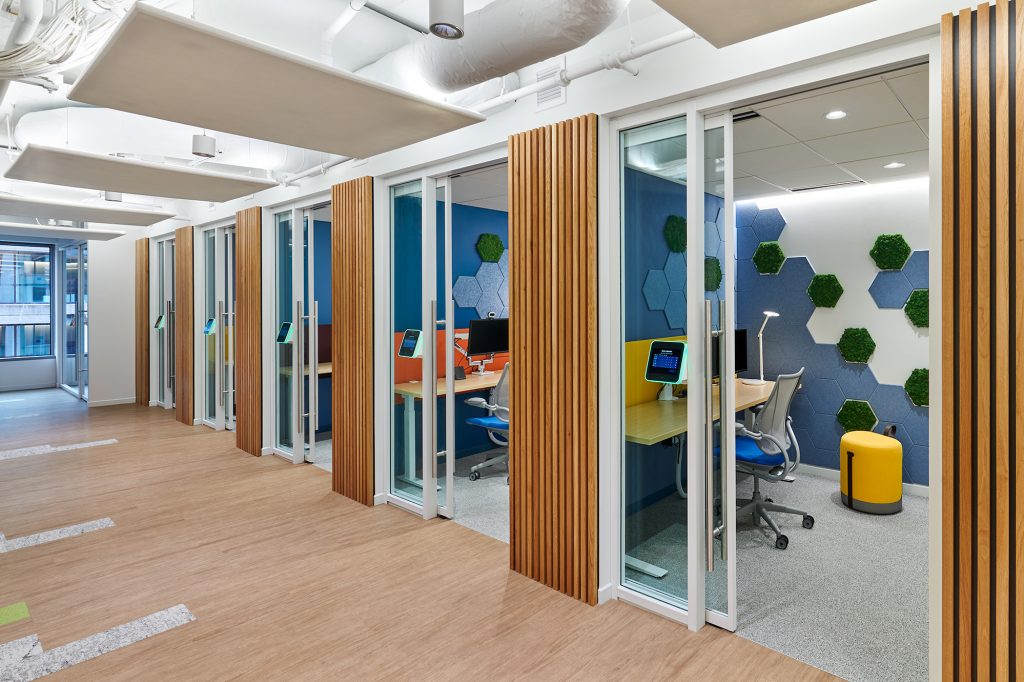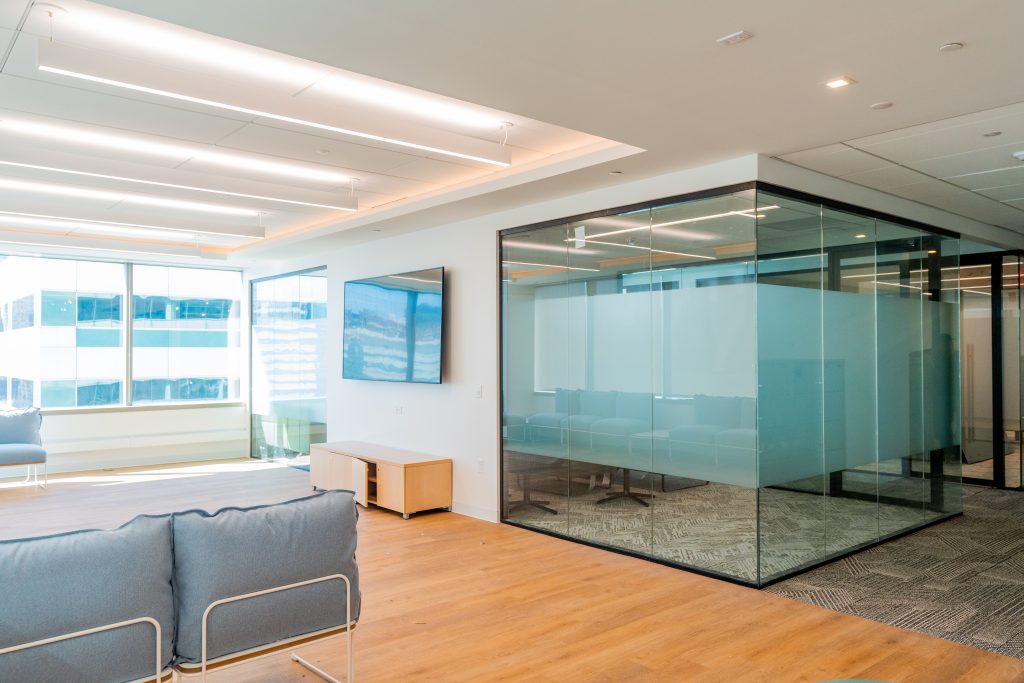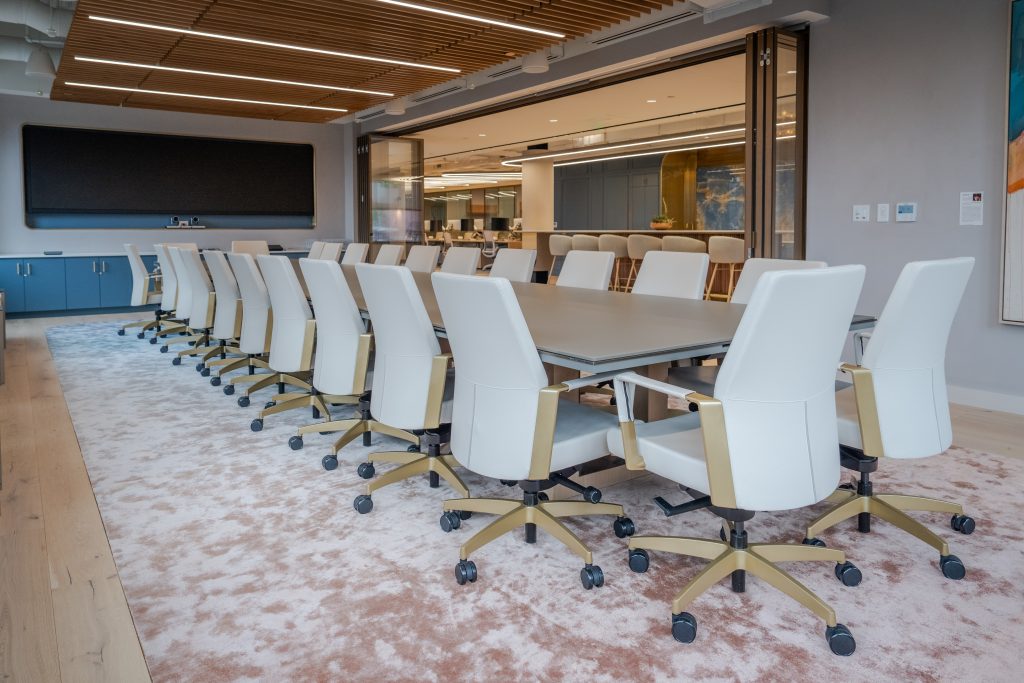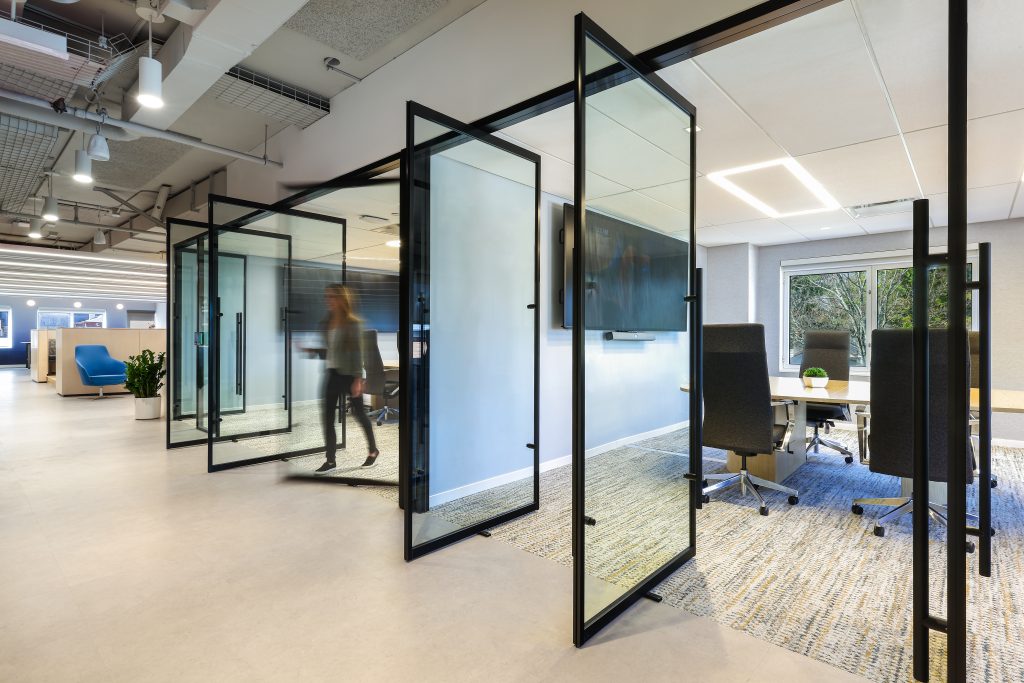The standard for what a workspace needs to be has evolved. More and more, A&D professionals are emphasizing the need to design collaborative, productive, and functional environments for hybrid teams. Hybrid workspaces not only need to be aesthetically pleasing but also inspiring, comfortable, and collaborative. This can be a challenge. However, as a leader in glass wall interiors, MetroWall knows firsthand how these interiors can provide solutions and help architects and designers push the envelope for what a corporate environment can be.

Balancing Natural Light & Privacy Needs
For those looking to maximize the amount of natural light in their space, glass wall interiors are a go-to solution. Natural light is a sought-after element for numerous reasons, among them are that it enhances the overall design by creating an open environment, and it promotes physical and mental well-being.
But while glass interiors are ideal for letting in natural light and creating an open feel, concerns are often raised because of their transparency. Visual privacy and sound management are still widely required. For example, for this project at Newport Tower, the end user had both visual and sound privacy requirements. To strike a balance between the design team’s intention to maximize natural light and the end user’s need for privacy, we suggest adding privacy film to meeting rooms and using smart glass in waiting rooms.

Designing with Functionality in Mind
Using materials and systems with high acoustic performance contributes to building various workspaces within an office. Having different styles gives hybrid teams the ability to move around freely depending on how they prefer to work or on the tasks they need to accomplish.
Selecting double-glazed glass wall systems with high STC ratings offer excellent sound insulation. For example, a system like MetroWall’s HUSH Series delivers a 50 STC rating, meaning that very loud sounds like musical instruments or a stereo can be faintly heard. When systems like this are combined with other design elements (e.g., paneling, ceiling systems), this can improve acoustics even more.

In hybrid workplaces, the amount of people in a space at a given time ebbs and flows. As a result, what an end user needs from their space will change drastically depending on the day. Incorporating features like operable walls or pivot doors helps architects and designers build functionality into a space. Features like these enable end users to quickly and easily reconfigure the layout of their office depending on their needs and work styles.
Although hybrid teams and workspaces continue to evolve, designing welcoming, inspiring, and highly functional spaces is non-negotiable. Glass wall interiors create a pleasing aesthetic, as well as bold environments that exceed expectations and elevate people’s experiences within them. At MetroWall, our team is always looking for ways to push the envelope for what a commercial environment with glass wall interiors can be and it’s exciting to work with so many design and construction professionals who are looking to do the same.
If you’re thinking about specifying MetroWall, download our Revit files or other resources.

